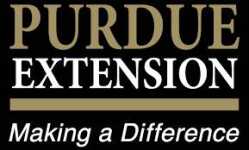Fireplace safety

With the cold weather we are experiencing and the cold weather certain to come this winter, it is important to discuss home heating related to fireplace safety.
In the past, houses have burned because of soot collecting around the top of the chimney catching fire. That soot then rolls off onto the roof, catching the roof on fire. Therefore, it is extremely important that you inspect and clean the chimney and stove or fireplace prior to starting a fire.
There are numerous products on the market to help clean your chimney. However, there are no good substitutes for properly cleaning the chimney with the correct-sized brush and doing a thorough inspection for cracks or other problems. Besides having this done prior to starting a fire, you will also want to clean your chimney after you burn any “green” wet wood. Therefore, it is best to avoid these types of wood (this would include pine).
If you haven’t had a chance to cut enough wood for the upcoming winter or are realizing you are going through your wood faster than you anticipated, then you have a few options available to help relieve your stress. The first option would be to find some downed trees. One tree to look for is ash, since it is a heavy wood that burns well and has low moisture content. If you would like to burn trees that are known to have a good fragrance, then try to cut down apple, black cherry, bitternut hickory, shagbark hickory, osage-orange and eastern redcedar trees. If you do not want to search for fallen trees or harvest standing trees, another option may be to purchase firewood.
Purchasing firewood can be a confusing task if you do not know some of the terminology. A cord is a volume measurement of 4’x4’x8’ or 128 cubic feet of wood, bark and air space. Value is greater for the better stack with the larger amount of wood and lesser amount of air space. A rick differs as it is a “face cord” or stack that is 4 feet high and 8 feet long. However, the length of the firewood may vary and would not sum to 4 feet like in a cord.
The Purdue Extension publication FNR-79 titled “Wood for Home Heating” provides information on a variety of wood species and their weight per cubic foot. A copy of this publication can be obtained from your local Extension office or by going to: https://www.extension.purdue.edu/extmedia/FNR/FNR-79.pdf.
Due to the poisonous nature of preservations, treated wood should not be used in a fireplace. You can find value in the wood ash left in your fireplace if you use it as fertilizer. This is because native Indiana woods often have 50-percent to 70-percent calcium or lime, which is beneficial. If using a fireplace, keep the fire screen in place to prevent unwanted fires.
Visit www.extension.purdue.edu/putnam or you can contact the local Purdue Extension office at 653-8411 for more information regarding this week’s column topic or to RSVP for upcoming events.
Upcoming Events:
Nov. 24 – Curb the Urge to Splurge During the Holidays, virtual, 2-3 p.m., register at https://tinyurl.com/splurgeputnam
Nov. 26-27 – Extension office closed for Thanksgiving
Dec. 1 – Human Trafficking in Indiana, virtual, 2-3 p.m., register at https://tinyurl.com/humantraffickingputnam
Dec. 1 – Selecting, Caring and Disposal of Your Christmas Tree, virtual, 7-8 p.m., register at https://tinyurl.com/ChristmasTrees2020
Dec. 2 – Enhancing Your Land Leases, virtual, 12–1 p.m., pre-register at https://tinyurl.com/WIAWebinar
Dec. 3 – Crops Conference, virtual, 9–11 a.m., cost $15 for PARP or CCH credit, pre-register at https://bit.ly/2020CropsConference
Dec. 14 – ServSafe Food Managers online exam, 9 a.m.-12 p.m., $65-$115, register at https://www.purdue.edu/servsafe/workshops
Dec. 15 – Area 5 Virtual PARP, virtual, 9–11 a.m., cost $15 for PARP or CCH credits, pre-register at https://bit.ly/Area5PARP
Dec. 15 – Take Time for Your Health, virtual, 12–1 p.m., pre-register at https://tinyurl.com/WIAWebinar
